Parque Natural de Urkiola · Ayuntamiento de Abadiño
Situación
Menú principal
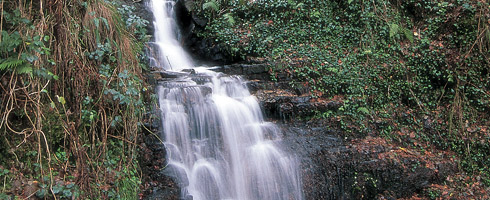
The Urkiola mountains are the start of numerous streams, most of which of them are tributaries of the Urkiola, Mañaria and Mendiola rivers. The willow, a tree that needs waterlogged soil, grows on the river banks where the soil is more damp. On the other hand, the beech also grows alongside the willow beside the spring, as there are steep slopes and the soil is not so waterlogged. Apart from the willow, there are also other trees and bushes that can grow in very damp soil, such as ash, large grey willow and the hazelnut. Sweet amber, saxifrage, the meadow cress, female fern, autumn buttercup and water mint.
Peat bogs also appear in some places where water accumulates. From a distance, it just looks like muddy pastureland, but in reality they are made up by a type of moss called Sphagnum. Sphagnum moss grows one on top of another and those that remain below do not rot as the soil is saturated in water with a low oxygen content. The result is that the plants that do not rot form the peat, a species rich in organic material that is sometimes used as fuel instead of coal. Apart from the sphagnum moss, the typical plants of this community are some insect-eating plants (round leaf sundew and the Irish butterwort) and peat heather. There are very few peat bogs in the park and they barely produce peat, which is why they are called sphagnum moss bogs. The most outstanding examples are those on the south slopes of Saibi, Urkiolagirre, Makatzeta and Eskuaga.
The reed beds that appear in the meadows is another of the communities linked to water. Some of the few reed beds to be found in the Park are on the slopes next to the River Urkiola.
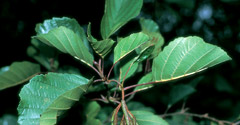
Tree 10-25 m high, pyramid crown at start, but in age become round or irregular. The bark is greyish brown or grey. The leaves are round, with a serrated border and obtuse end. The male flowers hand in long catkins and the female flowers in round catkins. It flowers from February to April and the fruit is a tiny woody pine nut. It grows on the banks of the Rivers Urkiola, Mendiola and Mañaria.
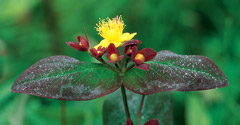
Plant that is rather woody at the base and grows up to 1 m high. It has ovulated and opposite large leaves, often with red hues. The flowers are yellow and grow in groups. It flowers from June to August and the fruit is a smooth black berry. It can be found along the streams that cross the track from Txakurzulo to Atxarte.
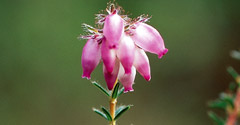
Small bush, 20-70 cm high, with twisted stems. It has small long leaves arranged in groups of four, often with glandular buds. The flowers are spiky, light pink in colour and are arranged in dense heads at the end of the branches. It flowers from June to October. It grows in peat and sphagnum moss bogs.
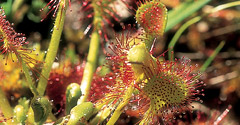
Small carnivorous plant, 5-15 cm high, with a rosette of basal leaves.. The leaves are circular and are covered with red glandular hairs. It produces white flowers at the end of a thin stem from June to August. It grows in peat bogs, sphagnum moss bogs, springs and in waterlogged soil. The round leaf sundew is a plant that feeds off insects, which are trapped in its sticky hair. The plant then digests its prey by means of digestive secretions.
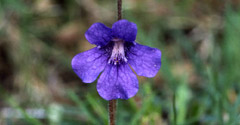
Plant, 5-25 cm high, with a rosette of yellowish-green elliptic leaves, the upper part of which is sticky. The flowers, violet or lilac and white inside, grow separately and have long pedunclues. It flowers from April to June. It grows in sphagnum moss bogs, by springs and on damp slopes. It is a carnivorous plant whose leaves are covered with small glands that secrete a sticky substance. When the insects land on the leaves, they are caught in the sticky substance and the plant gradually digests them with the help of digestive enzymes.
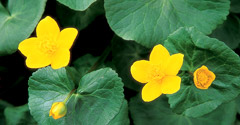
Herbaceous plant, 15-45 cm high, hollow stems and heart-shaped dark green leaves. It has large yellow flowers, arranged in a light grouping with numerous yellow stamens. It flowers from March to June in the waterlogged soil of springs, streams and willow groves. It can be found near to the River Urkiola and in the willow groves next to the Makatzeta farmstead, near to the Aldazitala recreational area.
2006 - 2007 © Anteiglesia de Abadiño Town Council - All rights reserved